Two things I will miss about being in Antarctica: cool ice crystals, and amazing atmospheric light shows.
I was not in Antarctica during the winter - in which case I would have been fortunate enough to see the Aurora Australis - the Southern Lights. While I was there, the sun was in the sky the entire time. But this gave me the opportunity to witness other amazing effects we rarely (if ever) see in the U.S. Every day, if it was a little cloudy, I would keep my eyes on the sky to see if the clouds would give way to some amazing new effect I hadn't seen before!

Haloes are similar to rainbows. They are caused by the same effect of light waves - refraction, in which the light waves come into a new medium and change their speed and direction. In a rainbow, the sunlight enters a raindrop, bounces around a couple of times, and then shines out into your eyes. Because different frequencies (what our eyes perceive as colors) are bent by different amounts (same as in a prism that splits light into a rainbow), the different colors appear to come from different regions of the sky.
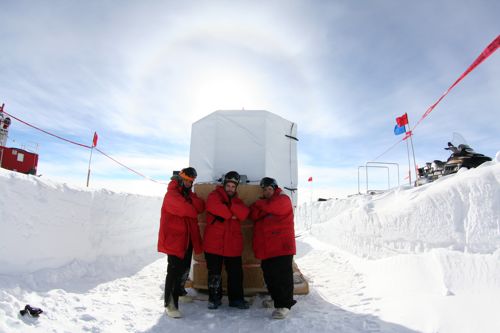
In a halo, the same thing occurs, except instead of entering a spherical drop of liquid water (yes, raindrops are really shaped like a sphere, not the "tear drop" you probably have drawn!), the light enters an ice crystal. If you have ever looked closely at a snowflake, you've seen a crystal of ice - they generally have six sides around the outside, and two flat faces on top and bottom. This means the light refracts in an ice crystal differently than in a spherical raindrop.
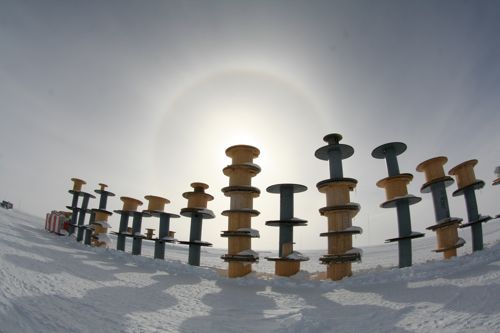
Haloes form when ice crystals in the air are arranged randomly, pointing every which direction. But sometimes, they tend to line up - usually with the flat sides pointing up and down - and the light creates a variation on the halo, called a Sun Dog. Bright spots appear on the left and right sides of the halo. The better the crystals are lined up, the clearer the sun dogs appear!
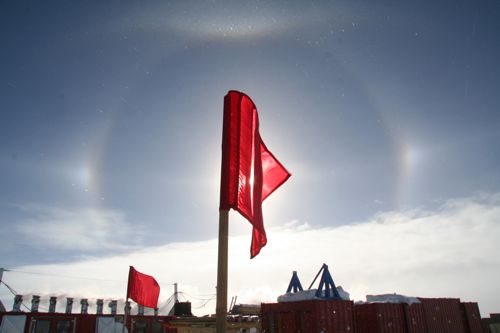
And sometimes you get other effects that are even more rare. Here is a website with more information on haloes, arcs, and other ice-crystal effects, as well as rainbows, sun rays, and shadows: http://www.atoptics.co.uk/
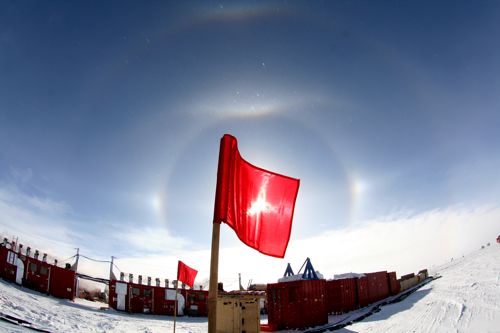
In addition to the ice crystals in the atmosphere, some cool things happen on the ground as well! Since it never gets above freezing at the South Pole, the ice can't melt. Instead, it can go from solid (ice) straight to gas (water vapor) - a process called "sublimation" - the same thing that happens to solid carbon dioxide, aka dry ice. When it happens in your freezer, the moisture freeze-dries out of your food, and it's called "freezer burn!"
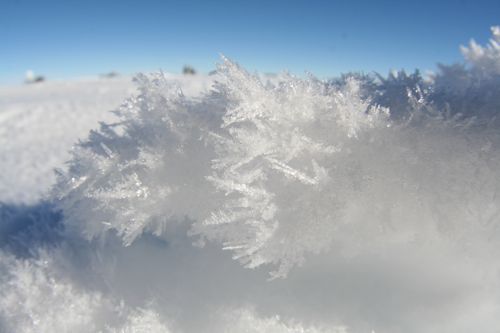
When ice sublimates, those free water molecules can re-freeze onto existing ice crystals, making more elaborate ice structures that look like snowflakes, or tiny ice trees. It also happens to your breath as the moisture instantly freezes onto your hair!
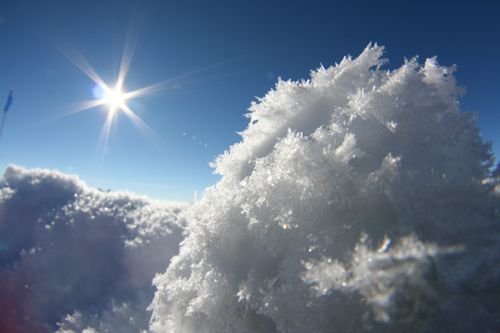
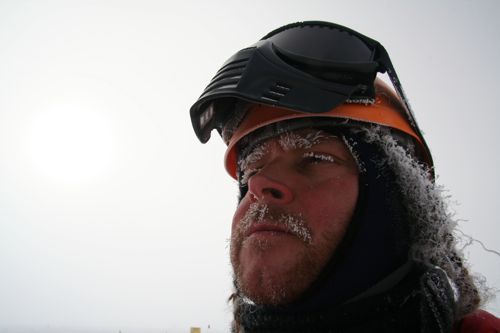


Comments